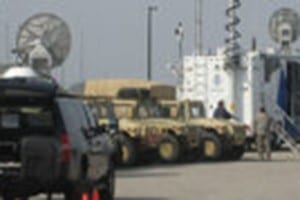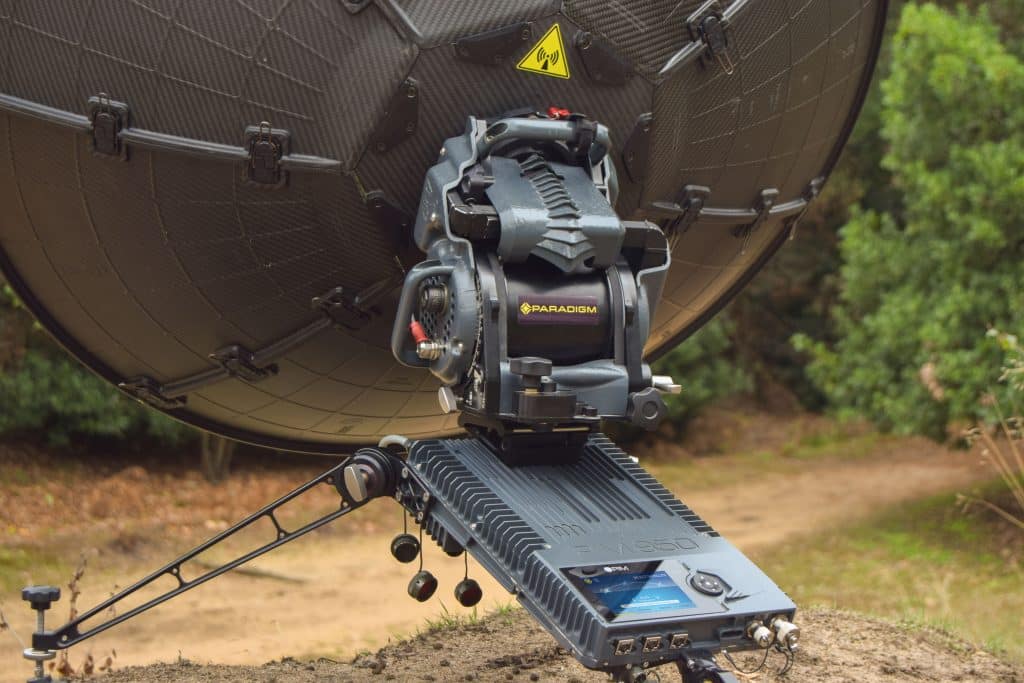Knight Sky Uses Intelsat Satellite to Provide Disaster Communications
Intelsat General
As Hurricane Arthur, the first named storm of the year, roared toward the Outer Banks of North Carolina on the afternoon of July 3, employees at Knight Sky in Frederick, MD, were working with officials from the Federal Emergency Management Agency (FEMA), planning for the worst. Happily, the worst did not happen. The hurricane passed further east, not making landfall “this time.” Damage was relatively light, ground-based communications were not destroyed, and Knight Sky’s SkyMAX services were not required. Had Arthur left a national disaster in its wake, Knight Sky was prepared to provide emergency satellite communications to FEMA or the North Carolina National Guard’s command vehicles, which would have been deployed to the Outer Banks.
Such is the nature of Knight Sky’s business, according to President George Knizewski. The company provides a majority of the emergency communications required by FEMA and Emergency Management Agencies throughout the United States, using Intelsat’s Horizons 1 satellite and the company’s SkyMAX Emergency Communications Network, managed from its secure Network Operations Center (NOC) located in Frederick. The satellite connection provides FEMA and others with on-site secure communications when a disaster takes out terrestrial communications infrastructure, mobile cell towers and other ground-based services.
For incidents such as hurricanes that provide some advanced warning, Knizewski said the company might have a few days to plan a response. However, other man-made or natural disasters such as the tornados this spring in Alabama and Mississippi and the disastrous mudslide in Oso, WA, that wiped out an entire town, do not provide any advance warning. Yet Knight Sky needs to respond within hours and may be providing connectivity for several weeks.
“It’s impossible to meet all the security requirements and regulations of interconnecting to the government’s communications network if you start when the disaster strikes,” said Knizewski. “All the work needs to be done in advance and all the equipment needs to be configured and tested prior to the disaster. You can’t start when the phone rings or you’ll never get the job done.”
Knight Sky’s contract with FEMA requires that satellite connectivity be provided within four hours of a request, but Knizewski said the company often has the connection up within minutes of notification.
“We already have our SkyMAX infrastructure and procedures in place and have coordinated with the customer, so we are always in a state of readiness, 24/7/365,” he said.
Knight Sky supports hundreds of emergency response vehicles scattered around the country that can deploy on a moment’s notice in the event of an incident. Once a decision is made to deploy a particular vehicle, Knight Sky receives the official government notification and establishes the satellite connection.
At Intelsat General one of our Customer Support Engineers coordinates the connection between Knight Sky and the Horizons 1 satellite or any other spacecraft that might be better suited to the mission.
Depending on the size of the mobile ground terminal, Knight Sky and Intelsat General can provide between 1 and 155 Mbps of broadband connectivity for voice, video and data that meets the performance, reliability and information assurance requirements of GSA and the security requirements of the Federal Information Security Management Act (FISMA).
In addition to FEMA, Knight Sky provides emergency communication services to U.S. Army North, based in Ft. Sam Houston, TX, which is responsible for assisting in national disasters. Knight Sky also provides similar connections to about a dozen state Emergency Management Agencies and National Guard Units.
Knizewski said meeting the security requirements when interconnecting with a government network is a particular challenge of his business. FEMA and Army North have their own distinct technologies and procedures, and each individual state has its own particular methods and regulations of establishing and maintaining secure emergency response communications.
“The National Weather Service is predicting a slow hurricane season, but of course there is no guarantee of that, so we are ready,” he said. “Summers have become the busy season for us. We are extremely proud to support federal, state and local agencies with emergency






















